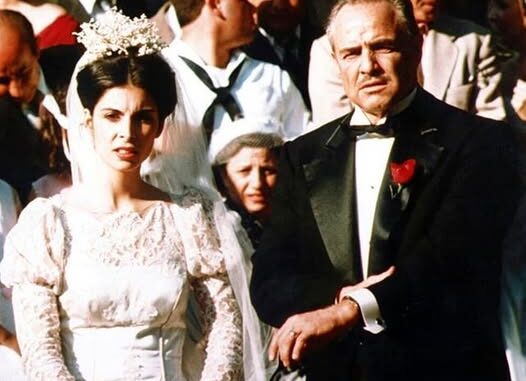
Connie – A Victim in the Earlier Films
Before The Godfather Part III, Connie is portrayed as a vulnerable and deeply wounded character, primarily a victim of family violence and the mafia power structure:
- Violence and personal loss: Her husband, Carlo Rizzi, not only abuses her physically and emotionally but also participates in the plot to kill her beloved brother, Sonny. This dual tragedy leaves Connie deeply traumatized.
- Lack of personal power: Despite being Vito Corleone’s only daughter, Connie has little influence over key family decisions. Her role is largely passive—mourning, suffering, and enduring circumstances she cannot change.
- Loss of trust and emotional security: Carlo’s betrayal and Sonny’s death undermine her faith in those around her, laying the psychological foundation for her development in Part III.
Conclusion: At this stage, Connie is clearly a victim, both physically and emotionally, embodying the suffering caused by family violence and mafia power dynamics.

Connie in Part III – Transition to Supporting Michael
In Part III, Connie is no longer passive; she becomes a strategic and emotional support for Michael:
a) Psychological and Emotional Growth
- Sense of family responsibility: Having endured multiple tragedies, Connie recognizes that supporting Michael is essential to protecting the family and the Corleone legacy. She evolves into a “mature elder sister” figure who helps Michael maintain stability.
- Understanding consequences: Her personal experiences of loss allow her to warn and guide Michael, helping prevent him from falling into despair or making rash decisions.
b) Social Role and Influence
- Family mediator and motivator: Connie maintains connections among family members and helps mediate conflicts, from Michael Jr. to Michael’s associates.
- Subtle influence: Though not directly involved in mafia operations, Connie’s emotional and strategic support underpins Michael’s power, enabling him to make more thoughtful decisions.
c) On-Screen Representation
- Present alongside Michael during political and business negotiations.
- Demonstrates decisiveness and composure in tense situations.
- Acts as a pillar of the family, reminding members of responsibility and family values.

Factors Leading to Transformation
Connie’s shift from victim → supporter of Michael is driven by several factors:
Personal experience: Losses of Sonny, Carlo, and Fredo make her realize that violence and power must be controlled to protect the family.
Family responsibility: Supporting Michael safeguards the family’s integrity and reputation.
Psychological maturation: Time and experience enable Connie to develop endurance, decisiveness, and strategic insight into power dynamics.
These factors collectively allow Connie to transform into a key emotional and strategic pillar of the Corleone family.
Significance of the Transformation
- Symbol of inner female strength: Connie demonstrates that women in a mafia family can exert strong influence and maintain balance, even without direct involvement in violence.
- Adds depth to her character: In Part III, Connie is both sensitive and strong, enriching the film’s exploration of family, power, and morality.
- Balances power and ethics: Connie reminds Michael and the family that power cannot be separated from moral responsibility, helping maintain the Corleone family’s long-term stability.
In summary: Connie’s evolution from victim → supporter of Michael is not only a character development arc but also a reflection of emotional strength, family responsibility, and strategic influence within the Corleone mafia family.
